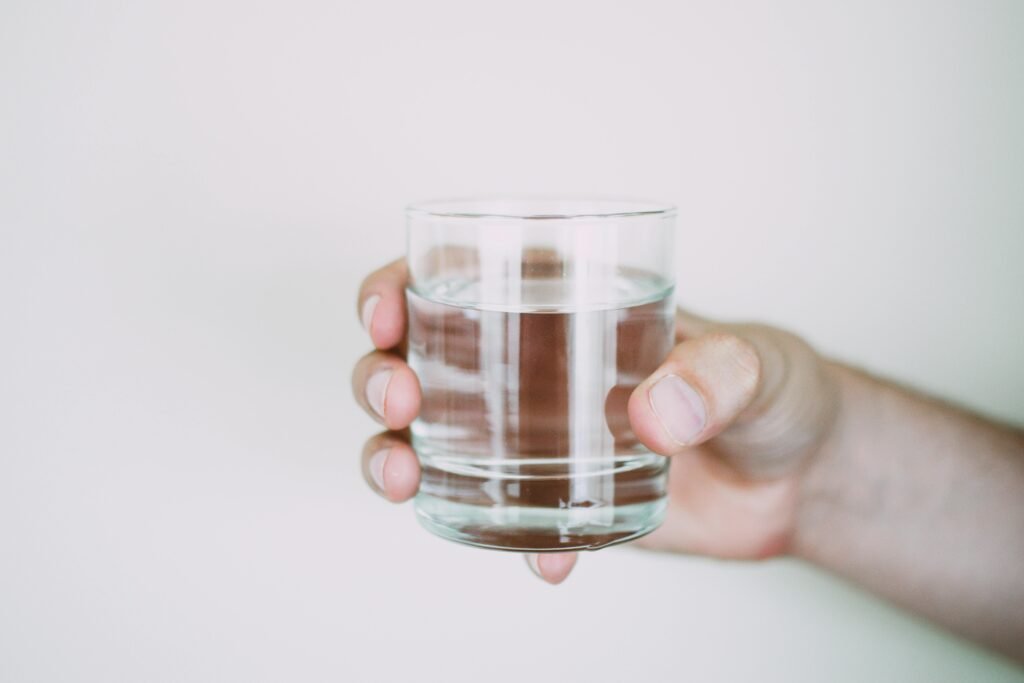Hydration Optimization for Endurance and Recovery

When it comes to athletic success, hydration is your secret weapon. Water fuels your body, keeps your muscles working, and helps you recover faster. Even mild dehydration can slow you down, making you feel tired or less focused. Studies show that losing just 2% of your body weight in water can increase your perceived effort, while severe dehydration can reduce your physical output by 8%. Proper hydration habits don’t just boost performance—they also protect you. Staying hydrated reduces the risk of injuries and supports muscle repair after intense workouts. By focusing on hydration optimization, you can push your limits and recover like a pro. Want to stay ahead? Start building smart hydration habits today.
Quick Tip: Don’t wait until you’re thirsty to drink water. Thirst often lags behind your body’s actual hydration needs.
Key Takeaways
Drinking water is important for sports. It helps muscles work and recover quickly.
Don’t wait to feel thirsty to drink water. Thirst means you’re already dehydrated, so sip water all day.
Check your urine color to see if you’re hydrated. Light yellow is good, but dark yellow means you need more water.
After exercising, replace lost fluids and salts. Drink 150% of the water you lost to recover well.
Adjust your water intake based on how much you sweat. Knowing your sweat amount helps you drink enough water.
The Science Behind Hydration Optimization
Hydration and Athletic Performance
Water’s role in energy production and muscle function
Your body relies on water to keep everything running smoothly. It helps transport nutrients to your muscles and removes waste products. During exercise, water plays a key role in energy production by supporting chemical reactions in your cells. It also keeps your muscles functioning properly by maintaining their elasticity and preventing cramps. Without proper hydration, your muscles can’t perform at their best.
Did you know? Sweating helps cool your body, but it also causes fluid loss. If you don’t replace that water, your performance can take a hit.
Effects of dehydration on endurance and strength
Dehydration can sneak up on you, especially during long workouts. When your body loses too much water, your endurance drops, and your strength suffers. You might feel tired faster or struggle to lift weights you usually handle with ease. Here’s why:
Dehydration disrupts your body’s fluid balance, making it harder to regulate temperature.
It reduces blood volume, which means less oxygen reaches your muscles.
Excessive sweating without replenishment can lead to a dangerous drop in electrolytes, causing fatigue and weakness.
Hydration and Recovery
Fluids in muscle repair and glycogen replenishment
After a tough workout, your muscles need water to recover. Hydration helps repair muscle tissue and replenish glycogen stores, which are your body’s energy reserves. Research shows that certain fluids, like deep-ocean mineral water, can speed up hydration recovery and even support muscle strength. So, drinking the right fluids after exercise isn’t just about quenching your thirst—it’s about fueling your recovery.
Hydration’s role in preventing injuries
Staying hydrated reduces your risk of injuries. Proper hydration keeps your joints lubricated and your muscles flexible. When you’re dehydrated, your muscles are more prone to cramps and strains. Over time, this can lead to more serious issues. By drinking enough water and replenishing electrolytes, you can protect your body and stay in the game longer.
Recognizing Dehydration
Physical and mental signs of dehydration
Dehydration doesn’t just make you thirsty—it affects your whole body. Watch out for these signs:
Physical symptoms: Dark yellow urine, dry mouth, fatigue, dizziness, and cramping.
Mental symptoms: Confusion, rapid breathing, and loss of coordination.
Ignoring these signs can hurt your performance and recovery. Pay attention to what your body is telling you.
Simple methods to assess hydration levels
Wondering if you’re hydrated? Here are some easy ways to check:
Urine color: Light yellow means you’re hydrated; dark yellow means you need more water.
Sweat rate: Weigh yourself before and after exercise to see how much fluid you’ve lost.
Urine specific gravity (USG): This method measures urine density and is highly accurate, though it requires special equipment.
Pro Tip: Everyone’s hydration needs are different. Find what works for you and stick to it.
Effective Hydration Strategies for Athletes
Pre-Hydration
How much to drink before exercise
Starting your workout properly hydrated is key to achieving optimal performance. Research suggests drinking 5-10 milliliters of water per kilogram of body weight 2-4 hours before exercise. For example, if you weigh 70 kilograms, aim for 350-700 milliliters of water. About 10-20 minutes before you begin, consume an additional 200-300 milliliters (7-10 fluid ounces). This ensures your body has enough fluids to handle the intensity of your activity.
| Time Before Exercise | Recommended Fluid Intake |
|---|---|
| 4 hours | 0.15-0.50 fluid oz. per pound of body weight |
| 2 hours | 3-5 ml of fluid per kg of body weight |
| 10-20 minutes | 200-300 ml (7-10 fl oz) |
Timing fluid intake for optimal performance
Timing matters when it comes to hydration. Start hydrated by drinking water consistently throughout the day, not just before your workout. This helps maintain hydration levels and prevents you from feeling sluggish. Avoid chugging large amounts of water right before exercise, as it can cause discomfort. Instead, sip fluids gradually in the hours leading up to your activity.
How to Hydrate During and After Activity
Fluid intake guidelines based on activity duration and intensity
Your hydration needs during exercise depend on how long and intense your workout is. For activities lasting less than an hour, water is usually sufficient. For longer or high-intensity sessions, aim to drink 200-300 milliliters every 10-20 minutes. This helps replace the fluids lost through sweat and keeps your energy levels steady.
The importance of electrolytes during and after exercise
When you sweat, you lose more than just water—you also lose electrolytes like sodium and potassium. These are essential for muscle function and preventing cramps. Sports drinks can help you replenish these electrolytes, especially during intense or prolonged workouts. Look for drinks with sodium to improve fluid retention and maintain hydration.
Pro Tip: Monitor your electrolytes by paying attention to signs like muscle cramps or fatigue. If you experience these, it might be time to add a sports drink to your routine.
Post-Exercise Rehydration
Replenishing fluids and electrolytes for recovery
After exercise, your body needs to recover. Rehydrating within 30 minutes is crucial. Aim to replace 150% of the fluids you lost during your workout. For example, if you lost 1 kilogram of body weight, drink 1.5 liters of water or a sports drink. This helps restore your fluid balance and supports recovery techniques like muscle repair.
The role of recovery drinks and hydrating foods
Recovery drinks can be a convenient way to replenish fluids and electrolytes. They’re especially helpful after high-intensity workouts. You can also turn to hydrating foods like watermelon, cucumbers, or oranges. For a salty boost, try snacks like salted nuts, pickled veggies, or cottage cheese. These options help you recover faster and prepare for your next workout.
Quick Tip: Combine water with snacks rich in sodium to maximize rehydration after exercise.
Debunking Common Hydration Myths
Myth: “Water alone is enough for hydration.”
Why electrolytes are essential for athletes
You might think water is all you need to stay hydrated, but that’s not entirely true—especially for athletes. When you sweat during intense training, you lose more than just water. Your body also sheds electrolytes like sodium, potassium, and magnesium. These minerals are crucial for keeping your muscles working, maintaining nerve function, and balancing your blood pressure.
Without replenishing electrolytes, your performance can take a hit. You might feel weaker, experience cramps, or even struggle to regulate your body temperature. To keep your electrolyte balance in check, consider adding sports drinks or electrolyte tablets to your routine, especially after long or high-intensity workouts.
Quick Tip: Look for drinks with sodium and potassium to help your body retain fluids and recover faster.
Myth: “Thirst is the best hydration indicator.”
Why thirst may not always reflect hydration needs
Relying on thirst to guide your hydration isn’t the best strategy. By the time you feel thirsty, your body is already dehydrated. This delay happens because thirst is a lagging indicator—it kicks in after your body has started losing fluids.
Instead of waiting for thirst, pay attention to other signs of dehydration, like dark urine, fatigue, or dry skin. You can also track your hydration by weighing yourself before and after exercise. If you’ve lost weight, it’s likely due to fluid loss, and you’ll need to rehydrate.
Pro Tip: Make hydration a habit. Sip water throughout the day, even if you’re not thirsty.
Myth: “Overhydration isn’t a concern.”
Understanding the risks of hyponatremia
Drinking too much water can be just as dangerous as not drinking enough. Overhydration dilutes the sodium in your blood, leading to a condition called hyponatremia. This imbalance can cause muscle spasms, weakness, and even confusion.
Athletes are particularly at risk during endurance events or in hot climates, where excessive water intake without electrolytes can disrupt your body’s balance. To avoid overhydration, focus on drinking fluids with electrolytes and monitor your intake. If you’re unsure, listen to your body and avoid forcing yourself to drink when you’re not thirsty.
Note: If you experience symptoms of overhydration, reduce your fluid intake and consider electrolyte replacement to restore balance.
Special Considerations for Hydration Optimization
Hydration in Different Environments
Strategies for hot and humid conditions
Exercising in hot and humid conditions can make you sweat more than usual, increasing your hydration needs. To stay ahead, focus on these strategies:
Rehydrate with a mix of water and electrolyte-rich drinks after workouts.
Use sports drinks, coconut water, or electrolyte tablets to replenish lost minerals.
Monitor your urine color. Light yellow means you’re hydrated, while dark yellow signals dehydration.
During activity, aim to drink 200-300 mL every 10-20 minutes. Afterward, rehydrate with 150% of the fluids you lost. For example, if you lose 1.6 kg during exercise, drink 2.4 liters of fluids with sodium to restore balance. Electrolytes are essential here. They prevent cramps and help your body cool down efficiently.
Adjusting hydration for cold weather
Cold weather can trick you into thinking you don’t need as much water. However, you still lose fluids through sweat and breathing. To stay hydrated:
Drink consistently throughout the day, even if you’re not thirsty.
Include warm beverages like herbal teas or broth to stay comfortable.
Carry a water bottle as a reminder to sip regularly.
Add electrolyte-rich drinks for intense workouts.
Hydrating foods like fruits and vegetables can also help. Watch for signs of dehydration, such as dark urine or dry skin, and increase your fluid intake if needed.
Individual Sweat Rates
How to calculate and use your sweat rate
Knowing your sweat rate helps you personalize your hydration plan. Here’s how to calculate it:
Weigh yourself before and after exercise.
Measure the fluids you drink during the session.
Subtract your post-exercise weight from your pre-exercise weight.
Add the fluid consumed to the weight lost.
Divide this total by the duration of your workout to find your sweat rate per hour.
For example, if you lose 1 kg and drink 500 mL during a 1-hour workout, your sweat rate is 1.5 liters/hour.
Personalizing hydration to your needs
Once you know your sweat rate, adjust your fluid intake accordingly:
Low sweat rate (< 1 liter/hour): Start with 10-16 oz of fluids per hour.
Moderate sweat rate (1-1.5 liters/hour): Aim for 20-24 oz per hour.
High sweat rate (> 2 liters/hour): You may need up to 34 oz per hour.
This approach ensures you meet your hydration needs without overhydrating.
Gender and Age Factors
How hydration needs differ by gender
Men and women have different hydration needs due to hormonal and physiological differences. Women tend to have less total body water, making them more sensitive to fluid loss. Hormones like estrogen and progesterone also affect sodium and water balance. Even a 0.5% fluid loss can impact women’s performance, while men can tolerate up to 1%.
Special considerations for older athletes
As you age, your body contains less water, increasing the risk of dehydration. Older athletes often have a reduced thirst sensation, so it’s important to drink regularly, even if you’re not thirsty. Adding sodium to your fluids can help retain water and reduce cardiovascular strain. Hydrating foods and electrolyte supplements can also enhance fluid absorption and support kidney function, which tends to decline with age.
Hydration is more than just drinking water—it’s the foundation of your athletic performance and recovery. Staying hydrated helps regulate your body temperature, deliver nutrients to your muscles, and prevent cramps and fatigue. It even sharpens your focus, so you can make better decisions during intense workouts. Plus, proper hydration speeds up recovery by flushing out waste and replenishing glycogen stores.
A personalized hydration plan takes this a step further. Tailoring your fluid intake to your sweat rate and activity level can improve anaerobic power, enhance focus, and even speed up heart rate recovery. Monitoring your hydration before, during, and after exercise ensures you’re always performing at your best. Use simple tools like urine color checks or sweat rate calculations to adjust your strategy as needed.
So, don’t leave your performance to chance. Stay hydrated, create a hydration plan that works for you, and keep refining it to meet your unique needs. Your body will thank you!
FAQ
What’s the best way to know if I’m hydrated?
Check your urine color. Light yellow means you’re hydrated, while dark yellow signals dehydration. You can also weigh yourself before and after exercise to track fluid loss.
Quick Tip: If you’re unsure, sip water throughout the day to stay ahead of dehydration.
How much water should I drink daily as an athlete?
Aim for about half your body weight in ounces of water daily. For example, if you weigh 150 pounds, drink 75 ounces. Adjust based on your activity level and sweat rate.
Note: Don’t forget to include electrolytes during intense workouts!
Can I drink too much water?
Yes, overhydration can lead to hyponatremia, where sodium levels drop dangerously low. This can cause confusion, weakness, or worse. Balance water intake with electrolytes, especially during long or intense activities.
Are sports drinks better than water?
Sports drinks help during long or high-intensity workouts by replacing lost electrolytes. For shorter sessions, water works just fine. Choose drinks with sodium and potassium for better hydration.
Do caffeinated drinks dehydrate you?
Not necessarily. Moderate caffeine intake doesn’t cause dehydration for most people. However, excessive caffeine can act as a diuretic. Balance caffeinated drinks with water to stay hydrated.
https://blissfullway.com/exciting-hobbies-to-discover-this-year/
Pro Tip: If you’re unsure, stick to water or electrolyte drinks during workouts.







